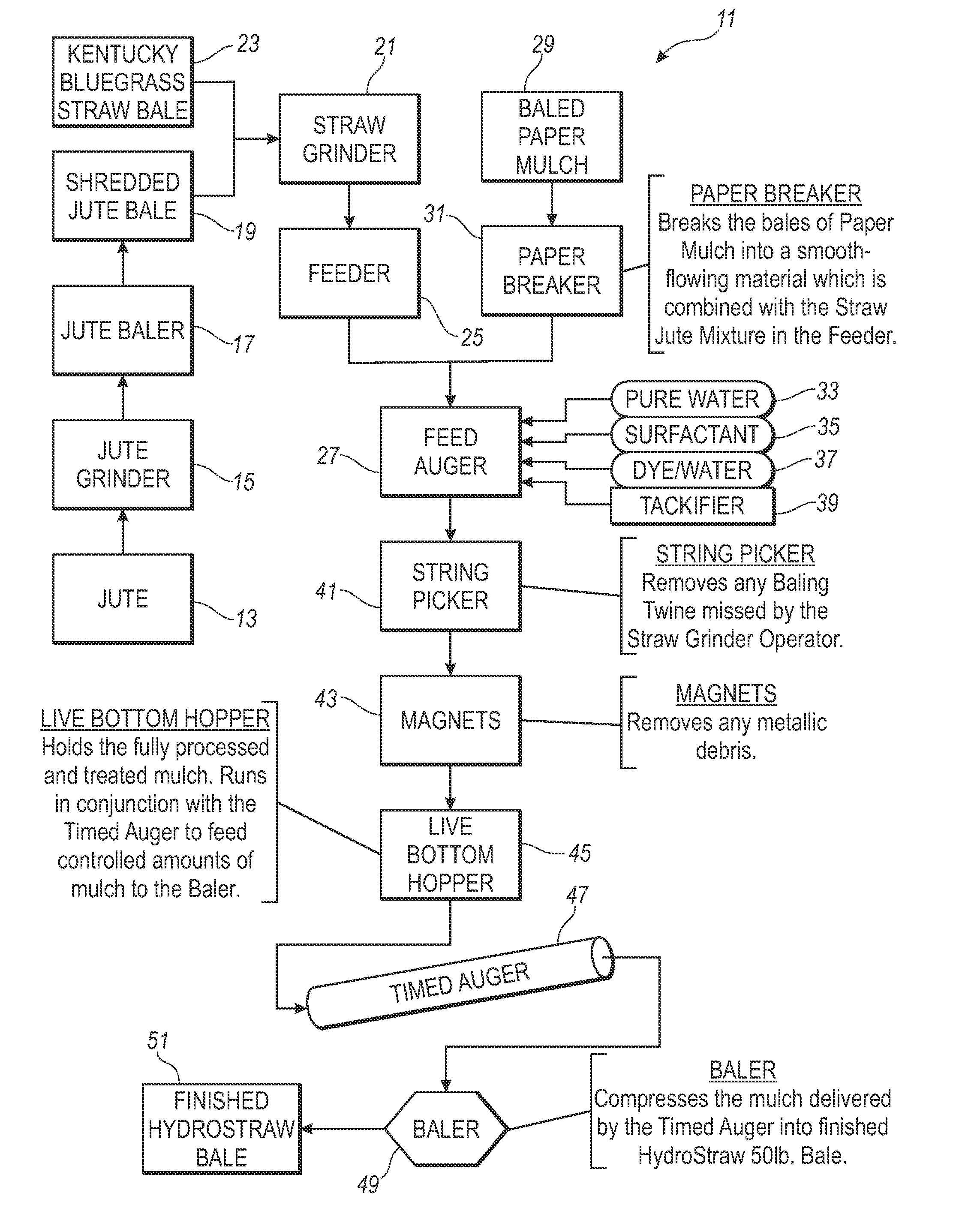Hydro straw mulch method
a mulching method and hydro technology, applied in soil-working methods, seed and root treatment, agriculture tools and machines, etc., can solve the problems of limited application low performance efficiency, and difficult use of paper or wood hydro mulch, and achieve high loft
- Summary
- Abstract
- Description
- Claims
- Application Information
AI Technical Summary
Benefits of technology
Problems solved by technology
Method used
Image
Examples
Embodiment Construction
[0023]The present invention provides a high lofted product that is a combination of fine hammermilled straw and hammermilled paper for partially releasing fibers. The fibers remain attached at ends to other fibers in the straw shafts and the paper particles. Jute fibers are processed, such as by hammermilling, to release short individual fibers that are used in small quantities to tangle the straw fibers. The product is a combination of straw, paper and jute fibers with tackifiers, flocculants, dye and surfactants. The flocculants aids in soil water infiltration rates and increase water clarity of runoff. The tackifiers hold the straw fibers together and on the ground. The surfactants suspend the solids in the water and aid pumpability. The tackifiers also aid in holding the fibers attached to adjacent fibers. The tackifiers, flocculants, and surfactants are also agro chemicals that aid growth when the products are used in hydroseeding and hydromulching for seed establishment and er...
PUM
 Login to View More
Login to View More Abstract
Description
Claims
Application Information
 Login to View More
Login to View More - R&D
- Intellectual Property
- Life Sciences
- Materials
- Tech Scout
- Unparalleled Data Quality
- Higher Quality Content
- 60% Fewer Hallucinations
Browse by: Latest US Patents, China's latest patents, Technical Efficacy Thesaurus, Application Domain, Technology Topic, Popular Technical Reports.
© 2025 PatSnap. All rights reserved.Legal|Privacy policy|Modern Slavery Act Transparency Statement|Sitemap|About US| Contact US: help@patsnap.com


